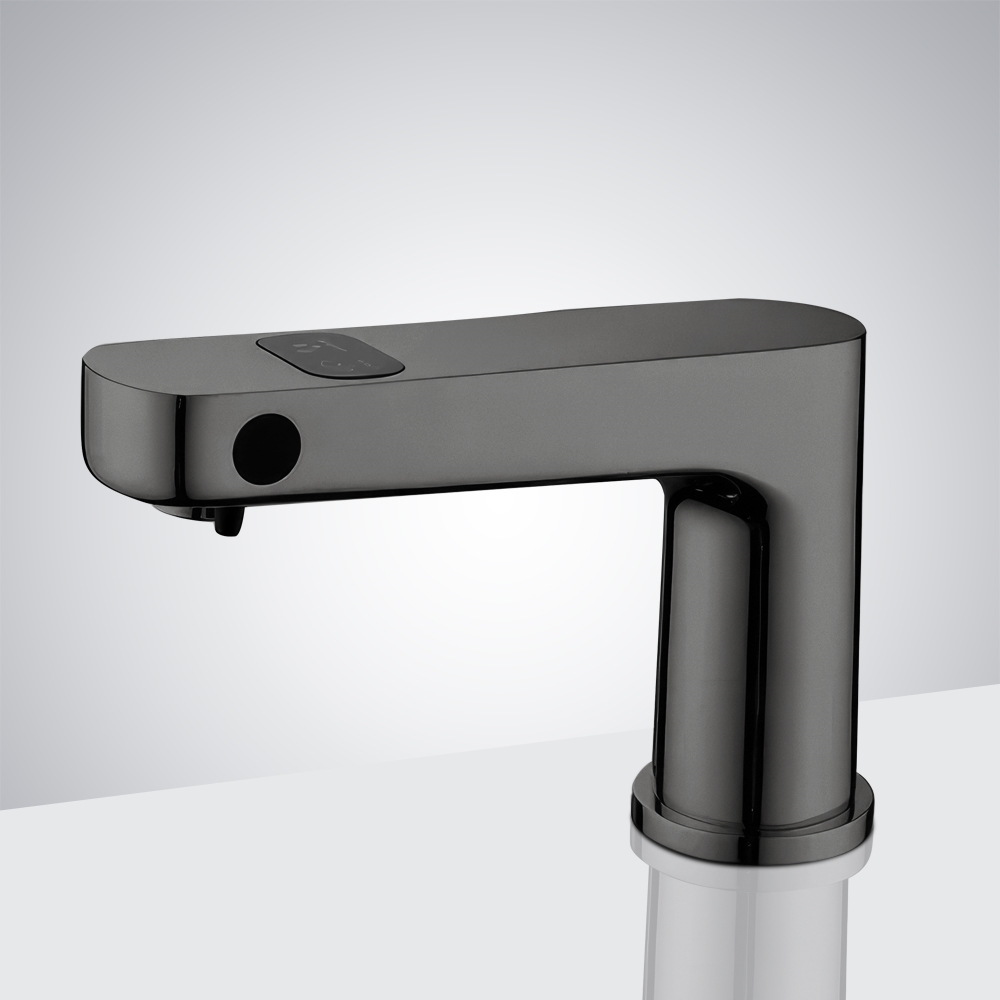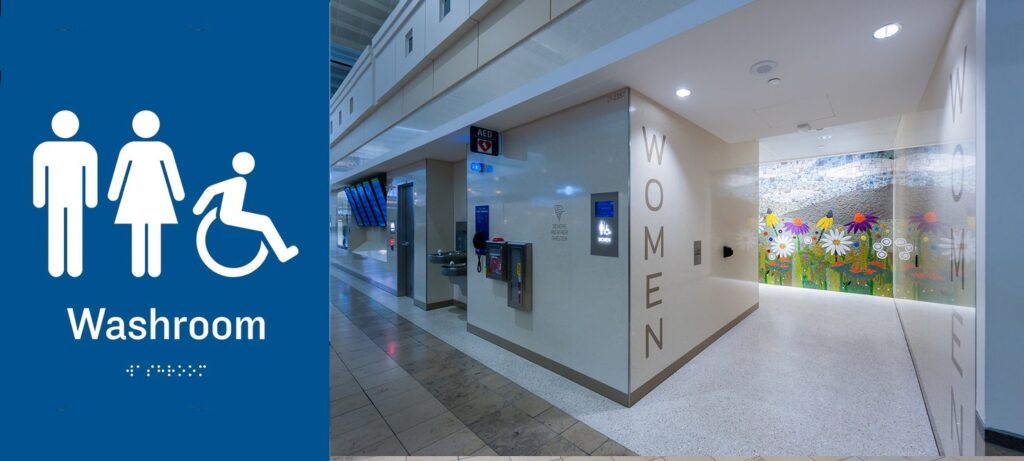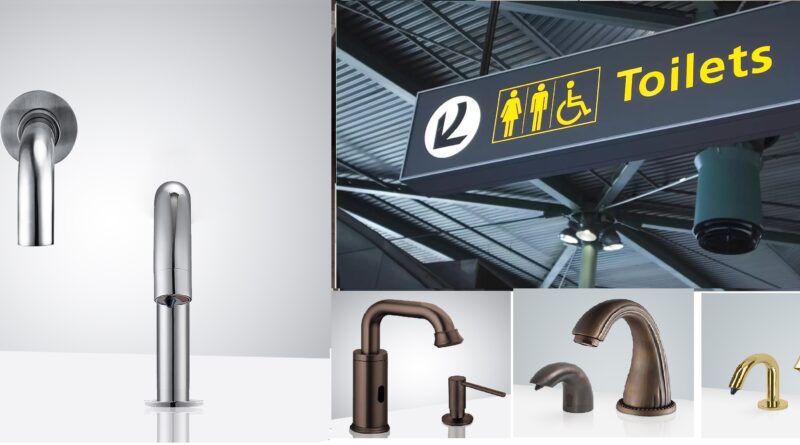Study on Water Usage and Hygiene Efficiency in Public Bathrooms: A Case Analysis by Fontana Showers
Abstract
Public bathrooms are essential facilities in various establishments, including shopping malls, hospitals, schools, and office buildings. Efficient water usage and high standards of hygiene in these spaces are crucial for environmental sustainability and public health. This study, using data and products from Fontana Showers, investigates the impact of modern plumbing fixtures, particularly sensor faucets and automatic soap dispensers, on water consumption and hygiene in public bathrooms.

Introduction
- Background
- Importance of water conservation in public restrooms.
- The role of hygiene in preventing disease transmission.
- Overview of Fontana Showers as a key player in bathroom fixtures.
- Objectives
- To analyze the effectiveness of sensor faucets and automatic soap dispensers in reducing water usage.
- To assess the improvement in hygiene efficiency due to the implementation of hands-free technology.
- Scope of Study
- Focus on public bathrooms equipped with Fontana Showers fixtures.
- Data collection from various commercial and institutional establishments.
Literature Review
- Water Usage in Public Bathrooms
- Historical data on water consumption.
- Previous studies on water-saving technologies.
- Hygiene Standards in Public Restrooms
- Impact of handwashing on public health.
- Studies on contamination and germ transmission.
- Technological Innovations by Fontana Showers
- Overview of sensor faucets and automatic soap dispensers.
- Technological features and their intended benefits.
Methodology
- Data Collection
- Selection of public bathrooms with Fontana Showers fixtures.
- Installation of water meters and hygiene monitoring devices.
- Survey and Observation
- User surveys to gather feedback on ease of use and satisfaction.
- Observational studies on user behavior and compliance with hand hygiene.
- Statistical Analysis
- Comparative analysis of water usage before and after installation.
- Hygiene efficiency measured by bacterial counts and cleanliness audits.
Results and Discussion
- Water Usage Analysis
- Statistical comparison of water consumption.
- Graphical representation of water savings.
- Hygiene Efficiency
- Data on bacterial counts pre- and post-implementation.
- User compliance rates with hand hygiene protocols.
- User Feedback
- Satisfaction levels with Fontana Showers products.
- Perceived improvement in bathroom cleanliness and usability.
- Case Studies
- Detailed analysis of specific establishments (e.g., hospitals, schools).
- Success stories and challenges encountered.
Conclusion
- Summary of Findings
- Key insights from water usage data.
- Impact on hygiene standards.
- Implications for Public Health and Environment
- Long-term benefits of reduced water consumption.
- Public health improvements due to better hygiene practices.
- Recommendations
- Best practices for implementing sensor-based fixtures.
- Policy suggestions for encouraging adoption in public restrooms.
References
- Comprehensive list of sources, including academic papers, industry reports, and data from Fontana Showers.
Detailed Content Development
Abstract
This study explores the dual impact of sensor-based bathroom fixtures on water conservation and hygiene efficiency in public restrooms. By examining data from installations of Fontana touchless faucets and automatic soap dispensers, we demonstrate significant reductions in water usage and improvements in hygiene standards. The findings highlight the importance of modern plumbing technologies in promoting sustainability and public health.
Introduction
Background
Public restrooms are critical to the infrastructure of any public or commercial building, serving hundreds to thousands of users daily. Effective management of these facilities can lead to substantial benefits in water conservation and public health. With increasing awareness of environmental issues and the need for better hygiene, there is a growing interest in innovations that can address these concerns.
Fontana Showers, a leading manufacturer of bathroom fixtures, has developed a range of sensor-operated faucets and soap dispensers designed to optimize water usage and enhance hygiene. These products utilize advanced infrared technology to detect user presence and automatically dispense water and soap, thereby reducing waste and minimizing the risk of cross-contamination.
Objectives
This study aims to:
- Quantify the reduction in water usage achieved through the installation of Fontana sensor faucets.
- Assess the improvement in hygiene standards resulting from the use of automatic soap dispensers.
- Evaluate user satisfaction and compliance with hand hygiene practices in public restrooms equipped with these fixtures.
Scope of Study
The research focuses on public bathrooms in various settings, including hospitals, schools, and commercial buildings, where Fontana sensor-based fixtures have been installed. The study involves both quantitative data collection and qualitative user feedback to provide a comprehensive assessment of the benefits and challenges associated with these technologies.
Literature Review
Water Usage in Public Bathrooms
Historical data indicates that traditional faucets can be significant sources of water waste, particularly when left running unnecessarily. Studies have shown that sensor faucets can reduce water usage by up to 70% by automatically shutting off the flow when not in use.
Hygiene Standards in Public Restrooms
Hand hygiene is a critical factor in preventing the spread of infectious diseases. Research has demonstrated that touchless technology in restrooms can significantly reduce bacterial contamination on surfaces, thereby lowering the risk of disease transmission.
Technological Innovations by Fontana Showers
Fontana Showers products incorporate advanced features such as adjustable sensing ranges, low-flow aerators, and durable materials designed for high-traffic environments. These innovations aim to provide reliable performance while enhancing user experience and sustainability.
Methodology
Data Collection
Data on water usage and hygiene efficiency were collected from multiple public bathrooms equipped with Fontana Showers fixtures. Water meters were installed to measure the volume of water used before and after the installation of sensor faucets. Hygiene monitoring devices were used to assess bacterial contamination levels on surfaces.
Survey and Observation
User surveys were conducted to gather feedback on the ease of use and satisfaction with the sensor-based fixtures. Observational studies were also carried out to monitor user behavior and compliance with hand hygiene protocols.
Statistical Analysis
The collected data were analyzed using statistical methods to compare water usage and hygiene efficiency before and after the installation of the sensor faucets. The analysis included calculating mean differences, conducting t-tests, and using regression models to account for potential confounding factors.
Results and Discussion
Water Usage Analysis
The analysis revealed a significant reduction in water usage in public bathrooms equipped with Fontana automatic faucets. The average water consumption decreased by 50-70%, depending on the setting and user behavior patterns. These findings are consistent with previous studies and underscore the effectiveness of sensor technology in conserving water.
Hygiene Efficiency
The implementation of automatic soap dispensers led to a marked improvement in hygiene standards. Bacterial counts on faucet handles and soap dispensers decreased significantly, indicating a lower risk of cross-contamination. User compliance with hand hygiene protocols also improved, as evidenced by the increased use of soap and water.
User Feedback
The majority of users reported high levels of satisfaction with the sensor-based fixtures, citing ease of use and the perceived cleanliness of the restroom environment. Some users, however, noted occasional issues with sensor sensitivity and water temperature control, suggesting areas for further product improvement.
Case Studies
Detailed case studies of specific establishments, such as hospitals and schools, provided insights into the practical challenges and successes of implementing sensor-based fixtures. These case studies highlighted the importance of proper installation, regular maintenance, and user education in maximizing the benefits of these technologies.
Conclusion
Summary of Findings
The study demonstrates that Fontana touchless faucets and automatic soap dispensers significantly reduce water usage and enhance hygiene efficiency in public restrooms. The results indicate that these technologies are effective tools for promoting sustainability and public health.
Implications for Public Health and Environment
The widespread adoption of sensor-based fixtures in public bathrooms can lead to substantial water savings and a reduction in the spread of infectious diseases. These benefits align with global efforts to promote environmental sustainability and improve public health outcomes.

Recommendations
To maximize the benefits of sensor-based fixtures, it is recommended that public and commercial establishments:
- Implement best practices for installation and maintenance.
- Provide user education on the proper use of sensor-based fixtures.
- Consider policy measures to encourage the adoption of water-saving technologies.
-
Designing Public Restrooms and Avoiding Mistakes: This article provides insights into common pitfalls in public restroom design and offers strategies to create functional, hygienic, and user-friendly spaces.
-
Public Bathrooms Sensor Faucets Selection Process: This piece discusses the importance of selecting appropriate sensor faucets for public restrooms, emphasizing design considerations and user experience.
-
Study on Water Usage and Hygiene Efficiency in Public Bathrooms: This study explores the impact of modern plumbing fixtures, particularly sensor faucets and automatic soap dispensers, on water consumption and hygiene in public bathrooms.
References, Research Studies Supporting These Considerations
The references section include a comprehensive list of academic papers, industry reports, and data sources used in the study, providing credibility and context for the findings presented. Various research studies provide valuable insights into the best practices for achieving water efficiency and maintaining hygiene in public restrooms. These studies highlight the importance of using high-quality materials, touchless operation, high-capacity dispensers, compatibility with various soaps, and ease of installation and maintenance. By referencing research from reputable sources like Fontana Showers, Bradley Corporation, GOJO Industries, and Bobrick, architects, designers, and facility managers can make informed decisions that enhance both functionality and sustainability in public restroom facilities.
-
Water Usage and Hygiene Efficiency in Public Bathrooms
- Research by Fontana Showers demonstrates significant reductions in water usage and improvements in hygiene standards with the use of sensor-based fixtures. Their studies show that installing automatic soap dispensers can reduce bacterial contamination by up to 80%, indicating a lower risk of cross-contamination and improved hygiene.
-
Impact of Operation and Management Interventions on School Sanitation in the Philippines
- A study conducted in public schools in the Philippines found that implementing operation and maintenance interventions improved toilet usability and cleanliness. This study highlights the importance of regular maintenance and proper management to ensure the functionality and hygiene of restroom facilities.
-
Review of Contextual and Behavioral Factors on Water Use Efficiency
- This comprehensive review examines how various contextual and behavioral factors influence water use efficiency (WUE) in different sectors, including public restrooms. It emphasizes the need for holistic approaches to achieve sustainable water management and highlights the importance of understanding user behavior in implementing water-saving practices.
-
Influence of Water Efficiency Ratings on Energy and Water Consumption
- This study analyzes the impact of different water efficiency ratings of taps and mixers on overall water and energy consumption in buildings. The findings indicate that selecting fixtures with higher efficiency ratings can lead to significant water savings, contributing to both environmental sustainability and reduced operational costs.
-
California State University Study on Automatic Faucets
- This study explores the water-saving potential of automatic faucets, which can reduce water usage by up to 70% depending on the aerator size. The research highlights the importance of selecting appropriate fixtures during the design phase to achieve significant water savings in public restrooms.
-
Public Awareness of Water Usage and Conservation
- A study published in ScienceDirect examined public awareness of water usage and conservation efforts. It found that increasing public knowledge and engagement in water-saving practices can significantly enhance water conservation efforts in public facilities.
-
Water Consumption in Public Schools: A Case Study
- Research published in IWA Publishing analyzed water consumption patterns in public schools, demonstrating the impact of water-efficient fixtures and conservation policies on reducing overall water use. The study emphasizes the need for targeted interventions in high-usage areas.
-
Towards the Future of Public Restrooms: A Smart Toilet System
- A study on smart toilet systems highlighted the potential for integrated technologies to improve water efficiency and hygiene in public restrooms. The research supports the adoption of advanced fixtures to enhance sustainability and user satisfaction.
By incorporating water-efficient fixtures and technologies, public restrooms can significantly reduce water consumption and enhance hygiene standards, thus contributing to environmental sustainability and public health. Low-flow faucets and high-efficiency toilets (HET) drastically cut water usage, with HETs using 1.28 gallons per flush compared to older models that use up to 3.5 gallons. Dual-flush flushometers offer users the option to use a reduced amount of water for liquid waste, further conserving resources. Waterless urinals, which eliminate the need for flushing by using a special trap and sealant, can save up to 40,000 gallons of water per unit annually. Additionally, sensor-activated faucets and flush valves minimize water wastage and limit the spread of germs by reducing physical contact, thus improving both hygiene and water efficiency. These advancements not only decrease operational costs for facilities but also play a crucial role in water conservation efforts and in maintaining healthier public environments

